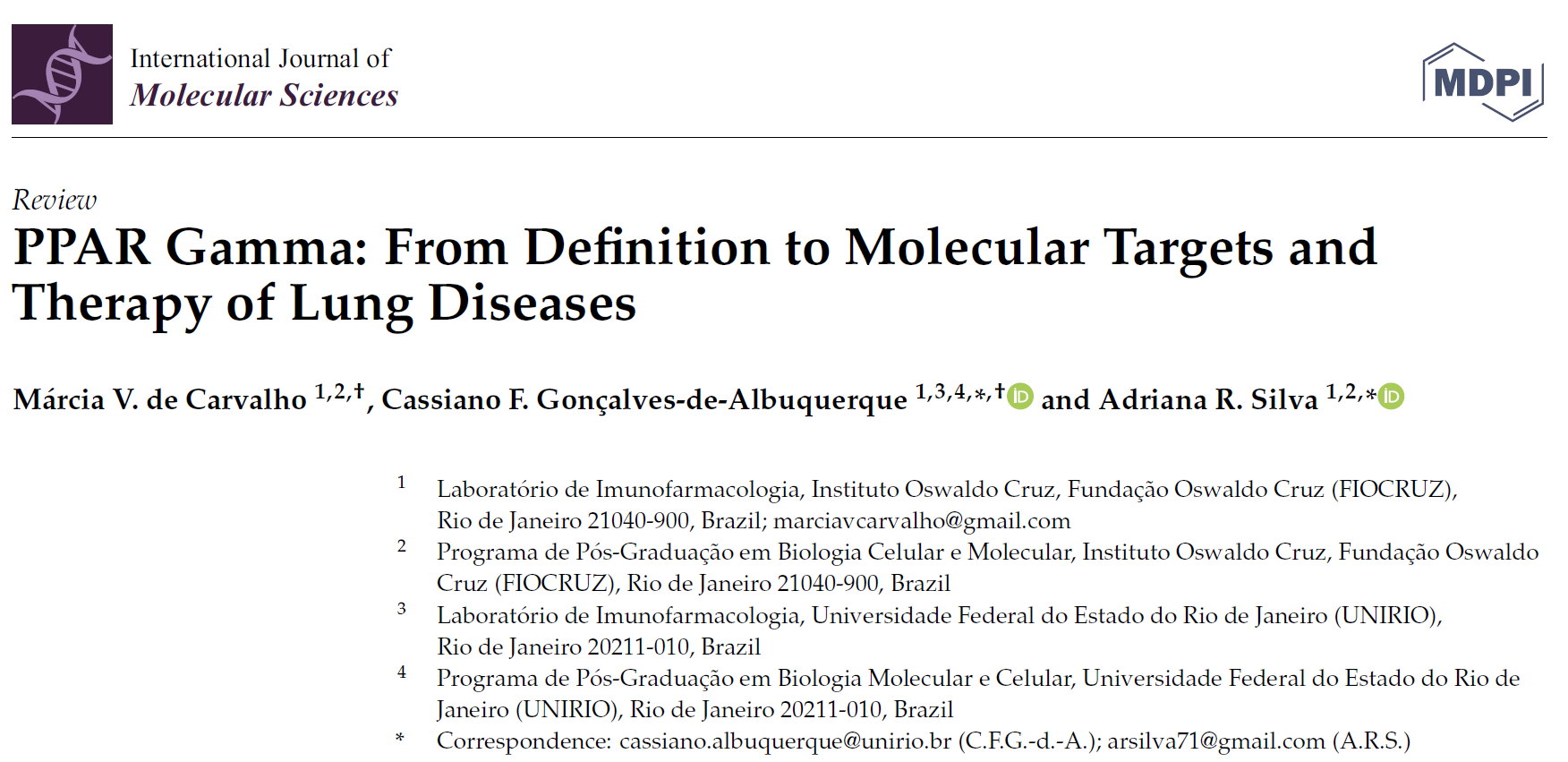
Abstract
Peroxisome proliferator-activated receptors (PPARs) are members of the nuclear receptor superfamily that regulate the expression of genes related to lipid and glucose metabolism and inflammation. There are three members: PPARα, PPARβ or PPARγ. PPARγ have several ligands. The natural agonists are omega 9, curcumin, eicosanoids and others. Among the synthetic ligands, we highlight the thiazolidinediones, clinically used as an antidiabetic. Many of these studies involve natural or synthetic products in different pathologies. The mechanisms that regulate PPARγ involve post-translational modifications, such as phosphorylation, sumoylation and ubiquitination, amongothers. It is known that anti-inflammatory mechanisms involve the inhibition of other transcription factors, such as nuclear factor kB(NFκB), signal transducer and activator of transcription (STAT) or activator protein 1 (AP-1), or intracellular signaling proteins such as mitogen-activated protein(MAP) kinases. PPARγ transrepresses other transcription factors and consequently inhibits gene expression of inflammatory mediators, known as biomarkers for morbidity and mortality, leading to control of the exacerbated inflammation that occurs, for instance, in lung injury/acute respiratory distress. Many studies have shown the therapeutic potentials of PPARγ on pulmonary diseases. Herein, we describe activities of the PPARγ as a modulator of inflammation, focusing on lung injury and including definition and mechanisms of regulation, biological effects and molecular targets, and its role in lung diseases caused by inflammatory stimuli, bacteria and virus, and molecular based therapy.
